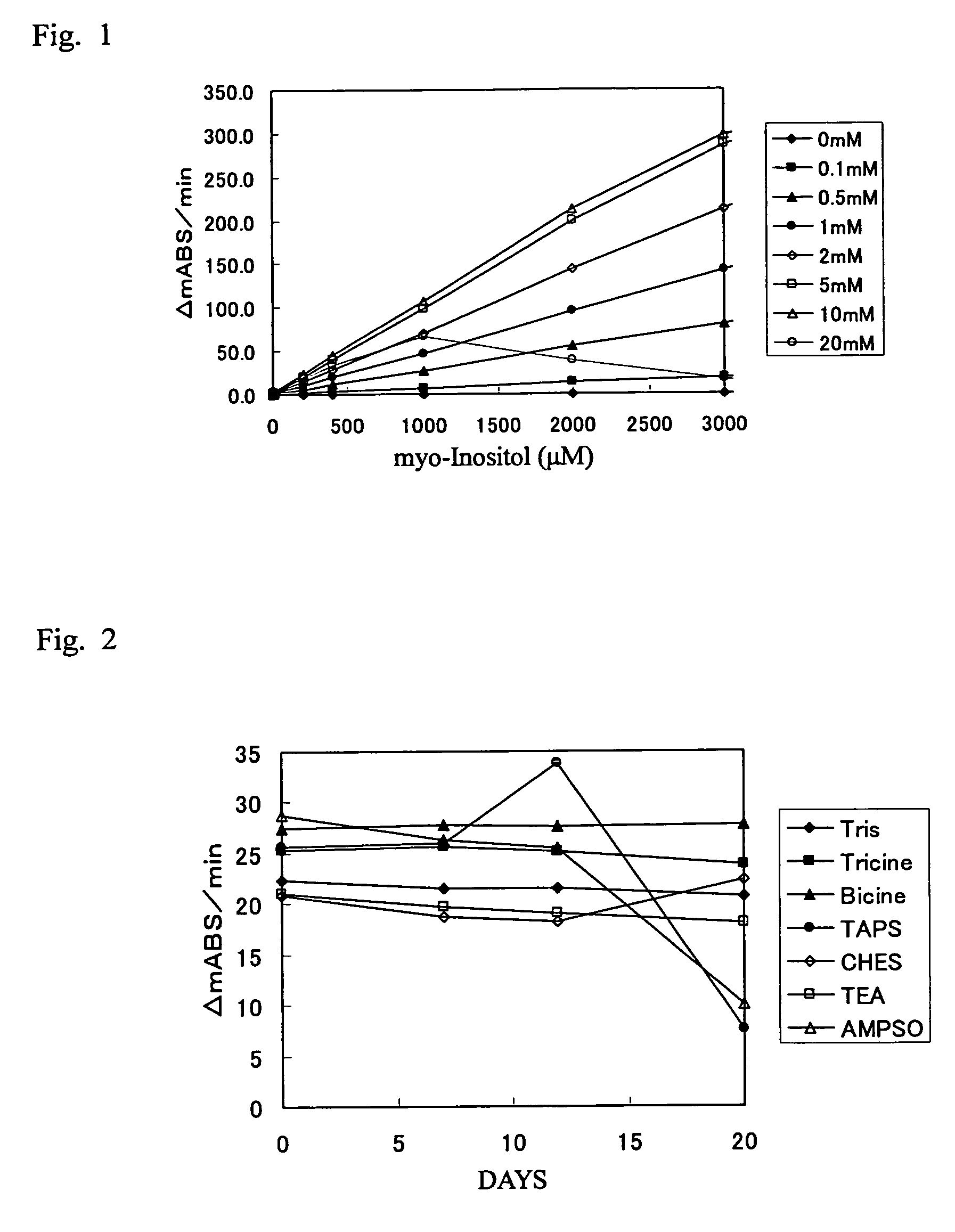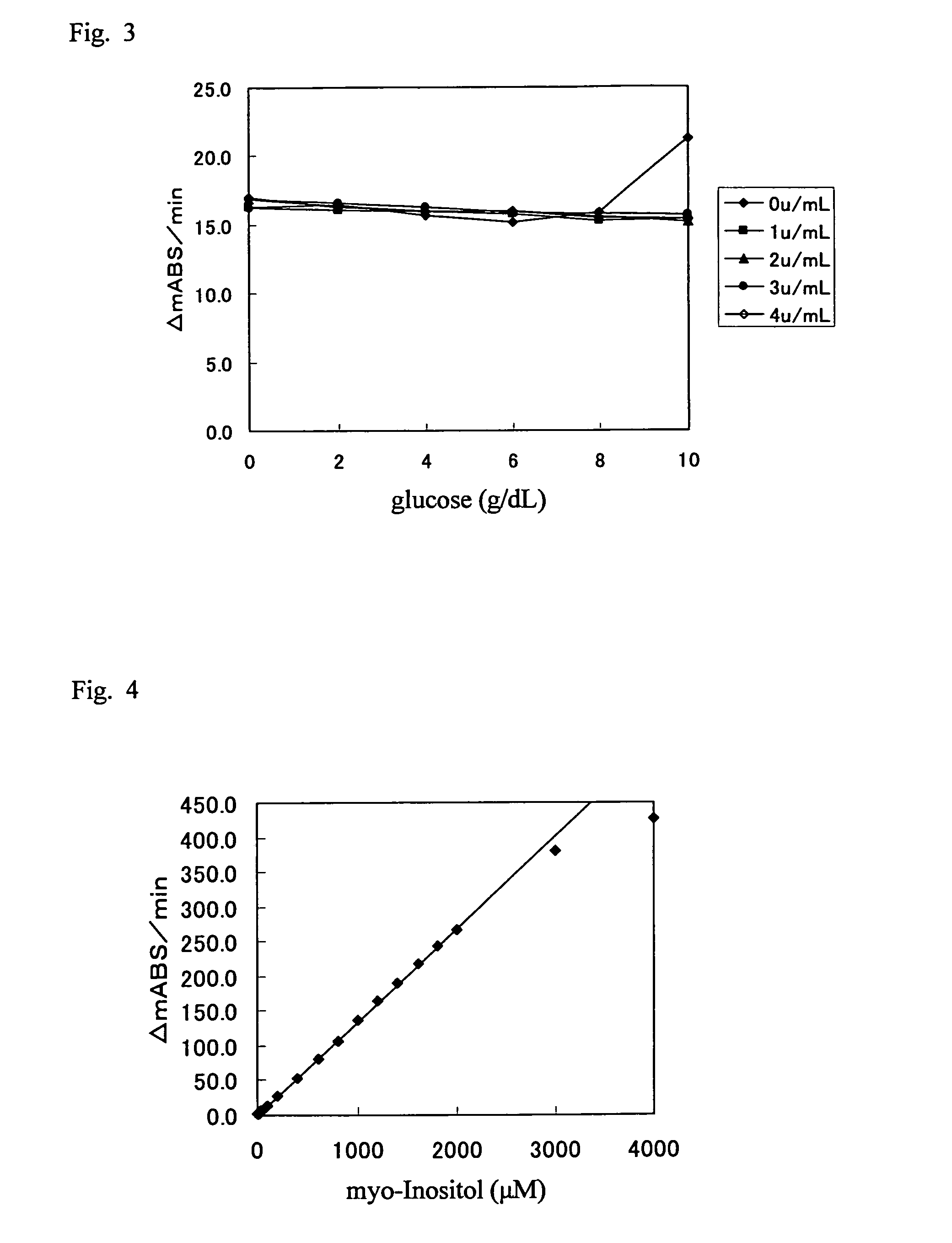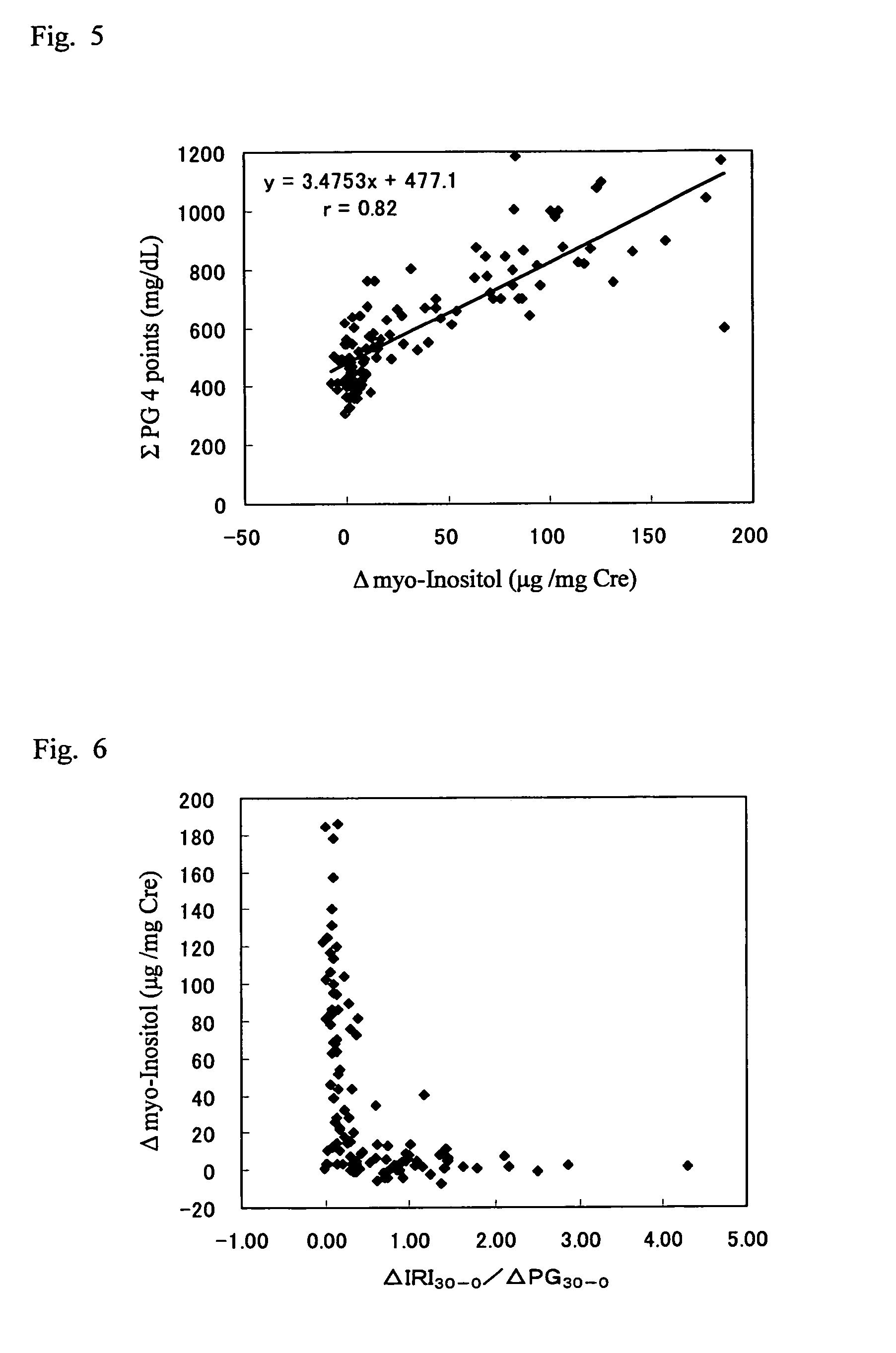Method of detecting mild impaired glucose tolerance or insulin secretory defect
a glucose tolerance and insulin secretory technology, applied in the field of mild impaired glucose tolerance or insulin secretory defect detection, can solve the problems of insufficient lower limit of detection, difficult to determine the effect of the lower limit, and difficult to detect the lower limit, etc., and achieve the effect of simple determination and good reproducibility
- Summary
- Abstract
- Description
- Claims
- Application Information
AI Technical Summary
Benefits of technology
Problems solved by technology
Method used
Image
Examples
reference example 1
Study on thio-NAD Levels
[0157]1) Reagents
[0158][0159]5 mM MES (2-Morpholinoethanesulfonic acid) (pH 6.0)[0160]0 to 40 mM thio-NAD (Oriental Yeast Co., Ltd.)
[0161][0162]200 mM Bicine (pH 9.0)[0163]0.3 mM NADH (Oriental Yeast Co., Ltd.)[0164]25 u / mL myo-inositol dehydrogenase (Asahi Kasei Corporation)
[0165]2) Method
[0166]The measurement device used was Autoanalyzer 7170S (Hitachi Chemical Co., Ltd.). To 3 μL of myo-inositol solution at concentrations of 0 to 3,000 μM, 180 μL of R-1 reagent was added and incubated at 37° C. for 4.8 minutes, followed by the addition of 180 μL of R-2 reagent to start the reaction. Absorbances at 405 nm were measured at 5.4 and 7.8 minutes after the reaction initiation, and then the difference therebetween was obtained. An increasing rate of absorbance per minute (ΔmABS / min) was calculated and the sensitivity was then investigated with respect to the standard solution.
[0167]3) Results
[0168]The results are shown in FIG. 1. As shown in FIG. 1, using thio-NA...
reference example 2
Study on Buffers in Reagents for myo-Inositol Quantitative Determination
[0169]1) Reagents
[0170][0171]5 mM MES (pH 6.0)[0172]5 mM thio-NAD (Oriental Yeast Co., Ltd.)
[0173][0174]100 mM Buffer (pH 8.8)[0175]0.5 mM NADH (Oriental Yeast Co., Ltd)[0176]10 u / mL myo-inositol dehydrogenase (Asahi Kasei Corporation)
[0177]2) Method
[0178]R-2 reagents for myo-inositol quantitative determination were prepared following the above shown composition with a buffer being selected from:
[0179]Tris (Tris(hydroxymethyl)aminomethane),
[0180]Tricine (N-Tris(hydroxymethyl)methylglycine),
[0181]Bicine (N,N-Bis(hydroxyethyl)glycine),
[0182]TAPS (N-Tris(hydroxymethyl)methyl-3-aminopropanesulfonic acid),
[0183]TEA (Triethanolamine),
[0184]CHES (2-Cyclohexylamino)ethanesulfonic acid), and
[0185]AMPSO(3-((1,1-Dimethyl-2-hydroxy-ethyl)amino)-2-hydroxypropanesulfonic acid).
[0186]The measurement device used was Autoanalyzer 7170S (Hitachi Chemical Co., Ltd.). To 15 μL of the standard 100-μM myo-inositol solution prepared i...
reference example 3
Study on ADP-Hexokinase
[0189]1) Reagents
[0190][0191]5 mM MES (pH 6.0)[0192]5 mM MgCl2 (Wako Pure Chemical Industries, Ltd.)[0193]8 mM ATP (Oriental Yeast Co., Ltd.)[0194]10 mM thio-NAD (Oriental Yeast Co., Ltd.)[0195]10 u / mL ATP-hexolinase (Asahi Kasei Corporation)[0196]0 to 4 u / mL ADP-hexokinase (Asahi Kasei Corporation)
[0197][0198]200 mM Bicine (pH 9.0)[0199]0.3 mM NADH (Oriental Yeast Co., Ltd.)[0200]25 u / mL myo-inositol dehydrogenase (Asahi Kasei Corporation)
[0201]2) Method
[0202]The measurement device used was Autoanalyzer 7170S (Hitachi Chemical Co., Ltd.). Samples were prepared by mixing 100 μL of 2,000 μM myo-inositol solution and 1 mL of 0 to 10 g / dL glucose solution. To 3 μL of each sample, 180 μL of R-1 reagent was added and incubated at 37° C. for 4.8 minutes, followed by the addition of 180 μL of R-2 reagent to start the reaction. Absorbances at 405 nm were measured at 5.4 and 7.8 minutes after the reaction initiation, and then the difference therebetween was obtained. A...
PUM
| Property | Measurement | Unit |
|---|---|---|
| temperature | aaaaa | aaaaa |
| pH | aaaaa | aaaaa |
| pH | aaaaa | aaaaa |
Abstract
Description
Claims
Application Information
 Login to View More
Login to View More - R&D
- Intellectual Property
- Life Sciences
- Materials
- Tech Scout
- Unparalleled Data Quality
- Higher Quality Content
- 60% Fewer Hallucinations
Browse by: Latest US Patents, China's latest patents, Technical Efficacy Thesaurus, Application Domain, Technology Topic, Popular Technical Reports.
© 2025 PatSnap. All rights reserved.Legal|Privacy policy|Modern Slavery Act Transparency Statement|Sitemap|About US| Contact US: help@patsnap.com



